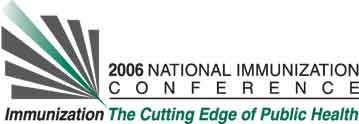Lori A. Crane1, Matthew F. Daley
2, Brenda L. Beaty
3, Shannon Stokley
4, Miriam Dickinson
5, Jennifer Barrow
3, Christine Babbel
3, John F. Steiner
3, Art Davidson
6, Allison Kempe
2, and Stephen Berman
2. (1) Dept. of Preventive Medicine & Biometrics, University of Colorado Health Sciences Center, 4200 E 9th Ave, Box B-119, Denver, CO, USA, (2) Dept. of Pediatrics, Univ. of Colo. HSC, Children's Outcomes Research Program, The Children's Hospital, 1056 E. 19th Avenue, B032, Denver, CO, USA, (3) Colorado Health Outcomes Program, University of Colorado Health Sciences Center, P.O. Box 6508, F-443, Aurora, CO, USA, (4) National Immunization Program, Centers for Disease Control and Prevention, 1600 Clifton Road, NE, MS E-52, Atlanta, GA, USA, (5) Dept. of Family Medicine, University of Colorado Health Sciences Center, 4200 E 9th Ave, Box B-119, Denver, CO, USA, (6) Public Health, Denver Health, 605 Bannock Street, MC #2600, Denver, CO, USA
Learning Objectives for this Presentation:
By the end of the presentation participants will be able to describe the advantages of conducting physician surveys using sentinel physicians.
Background:
Traditionally, physician surveys use a random sample from a master list and are administered by mail.
Objectives:
To determine the equivalency of a survey of sentinel physicians compared to the traditional approach in a survey of vaccine policy significance.
Methods:
Using data from the American Academy of Pediatrics' (AAP) Periodic Survey, we created a table of recruitment quotas for a sample of 400 pediatricians, representative by region, practice setting, and urbanicity. 2500 random members of the AAP were invited to be sentinel physicians. 549 eligible pediatricians responded and were placed into cells until quotas were reached. Sentinel physicians were administered a survey on the influenza vaccine shortage of the 2004-05 season by a combination of mail and email. Representativeness and responses were compared with a simultaneously conducted traditional mail survey using a random sample from the AMA Master File.
Results:
Response rates were 83% (sentinel) vs. 44% (traditional). Respondents were comparable in region, urbanicity, gender, and year of graduation. Sentinel physicians were more likely to be in a solo practice (69% vs. 63%) and less likely to be in a multi-specialty practice (14% vs. 17%) or managed care organization (3% vs. 7%) (p=0.04 overall). There were no differences in the proportion experiencing a vaccine shortage, the percent of ordered doses received, and appropriately distinguishing between high risk and average risk patient groups. Sentinel physicians were less likely to make vaccination decisions different from guidelines (21% vs. 29%, p=0.02).
Conclusions:
Sentinel physicians can be used to represent the opinions and experiences of the general population of pediatricians. The small differences found are not likely to affect policy decisions. This is a more rapid and efficient system than the traditional approach to physician surveys.
See more of Posters
See more of The 40th National Immunization Conference (NIC)

